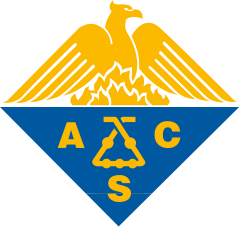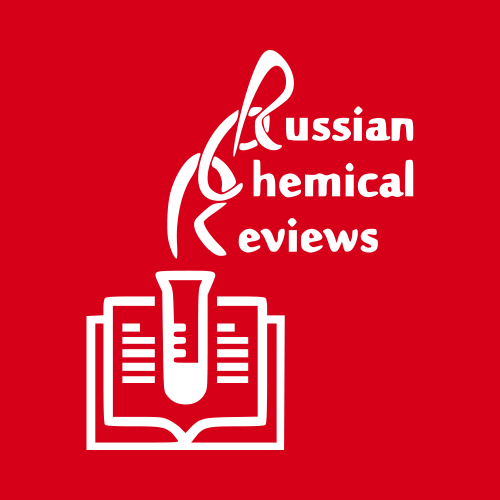Metal-organic aerogels based on titanium(IV) for visible-light conducted CO2 photoreduction to alcohols
Adrián Angulo-Ibáñez
1
,
Maite Perfecto-Irigaray
2
,
I Merino Garcia
3
,
Naia Luengo
2
,
Amaia M Goitandia
1
,
Jonathan Albo
3
,
Estibaliz Aranzabe
1
,
Garikoitz Beobide
2, 4
,
Óscar Castillo
2, 4
,
Sonia Pérez-Yáñez
2, 4
1
Surface Chemistry & Nanotechnologies Unit, Fdn Tekniker, Iñaki Goenaga 5, Eibar 20600, Spain
|
Тип публикации: Journal Article
Дата публикации: 2022-12-01
scimago Q1
wos Q1
БС1
SJR: 2.116
CiteScore: 16.7
Impact factor: 8.6
ISSN: 24686069
Materials Science (miscellaneous)
Energy Engineering and Power Technology
Fuel Technology
Nuclear Energy and Engineering
Renewable Energy, Sustainability and the Environment
Краткое описание
Metal-organic frameworks (MOFs) imply an appealing source of photocatalysts, as they combine porosity with tailorable electronic properties and surface chemistry. Herein we report a series of unprecedented metal-organic aerogels (MOAs) comprised by Ti(IV) oxo-clusters and aromatic dicarboxylic linkers as an alternative to microporous MIL-125 and MIL-125-NH 2 MOFs. Discrete titanium oxo-clusters polymerized upon the addition of the dicarboxylic linkers to give rise to a metal-organic gel. Their supercritical drying led to aerogels comprised by nanoscopic particles ( ca . 5–10 nm) cross-linked into a meso/macroporous microstructure with surface area ranging from 453 to 617 m 2 ·g –1 , which are comparatively lower than the surface area of the microporous counterparts (1336 and 1145 m 2 ·g –1 , respectively). However, the meso/macroporous microstructure of MOAs can provide a more fluent diffusion of reagents and products than the intrinsic porosity of MOFs, whose narrower channels are expected to imply a more sluggish mass transport. In fact, the assessment of the continuous visible-light driven photocatalytic CO 2 reduction into methanol shows that MOAs (221–786 μmol·g –1 ·h –1 ) far exceed the performance of their microporous counterparts (49–65 μmol·g –1 ·h –1 ), but also surpass the production rates provided by up-to-date reported photocatalysts. • Novel metal-organic aerogels based on titanium(IV) are presented. • These materials photocatalyse CO2 conversion under visible-light illumination. • The methanol production rates surpass up-to-date reported photocatalysts.
Найдено
Ничего не найдено, попробуйте изменить настройки фильтра.
Найдено
Ничего не найдено, попробуйте изменить настройки фильтра.
Топ-30
Журналы
|
1
2
|
|
|
Energy & Fuels
2 публикации, 6.06%
|
|
|
Journal of the American Chemical Society
2 публикации, 6.06%
|
|
|
Dalton Transactions
2 публикации, 6.06%
|
|
|
ChemSusChem
2 публикации, 6.06%
|
|
|
Chemical Engineering Journal
2 публикации, 6.06%
|
|
|
RSC Sustainability
1 публикация, 3.03%
|
|
|
ACS Applied Energy Materials
1 публикация, 3.03%
|
|
|
Advanced Energy Materials
1 публикация, 3.03%
|
|
|
Energy Sources, Part A: Recovery, Utilization and Environmental Effects
1 публикация, 3.03%
|
|
|
Small
1 публикация, 3.03%
|
|
|
ACS Sustainable Chemistry and Engineering
1 публикация, 3.03%
|
|
|
Catalysis Science and Technology
1 публикация, 3.03%
|
|
|
Journal of Cluster Science
1 публикация, 3.03%
|
|
|
Russian Chemical Reviews
1 публикация, 3.03%
|
|
|
Materials for Renewable and Sustainable Energy
1 публикация, 3.03%
|
|
|
Materials Today Energy
1 публикация, 3.03%
|
|
|
Fuel
1 публикация, 3.03%
|
|
|
EnergyChem
1 публикация, 3.03%
|
|
|
Applied Catalysis B: Environmental
1 публикация, 3.03%
|
|
|
Chinese Journal of Chemistry
1 публикация, 3.03%
|
|
|
Journal of the Iranian Chemical Society
1 публикация, 3.03%
|
|
|
Angewandte Chemie - International Edition
1 публикация, 3.03%
|
|
|
Angewandte Chemie
1 публикация, 3.03%
|
|
|
Rare Metals
1 публикация, 3.03%
|
|
|
ChemCatChem
1 публикация, 3.03%
|
|
|
Green Chemistry
1 публикация, 3.03%
|
|
|
ChemistrySelect
1 публикация, 3.03%
|
|
|
Inorganic Chemistry
1 публикация, 3.03%
|
|
|
1
2
|
Издатели
|
2
4
6
8
10
|
|
|
Wiley
10 публикаций, 30.3%
|
|
|
American Chemical Society (ACS)
7 публикаций, 21.21%
|
|
|
Elsevier
6 публикаций, 18.18%
|
|
|
Royal Society of Chemistry (RSC)
5 публикаций, 15.15%
|
|
|
Springer Nature
3 публикации, 9.09%
|
|
|
Taylor & Francis
1 публикация, 3.03%
|
|
|
Autonomous Non-profit Organization Editorial Board of the journal Uspekhi Khimii
1 публикация, 3.03%
|
|
|
2
4
6
8
10
|
- Мы не учитываем публикации, у которых нет DOI.
- Статистика публикаций обновляется еженедельно.
Вы ученый?
Создайте профиль, чтобы получать персональные рекомендации коллег, конференций и новых статей.
Метрики
33
Всего цитирований:
33
Цитирований c 2024:
19
(57.57%)
Цитировать
ГОСТ |
RIS |
BibTex
Цитировать
ГОСТ
Скопировать
Angulo-Ibáñez A. et al. Metal-organic aerogels based on titanium(IV) for visible-light conducted CO2 photoreduction to alcohols // Materials Today Energy. 2022. Vol. 30. p. 101178.
ГОСТ со всеми авторами (до 50)
Скопировать
Angulo-Ibáñez A., Perfecto-Irigaray M., Merino Garcia I., Luengo N., Goitandia A. M., Albo J., Aranzabe E., Beobide G., Castillo Ó., Pérez-Yáñez S. Metal-organic aerogels based on titanium(IV) for visible-light conducted CO2 photoreduction to alcohols // Materials Today Energy. 2022. Vol. 30. p. 101178.
Цитировать
RIS
Скопировать
TY - JOUR
DO - 10.1016/j.mtener.2022.101178
UR - https://doi.org/10.1016/j.mtener.2022.101178
TI - Metal-organic aerogels based on titanium(IV) for visible-light conducted CO2 photoreduction to alcohols
T2 - Materials Today Energy
AU - Angulo-Ibáñez, Adrián
AU - Perfecto-Irigaray, Maite
AU - Merino Garcia, I
AU - Luengo, Naia
AU - Goitandia, Amaia M
AU - Albo, Jonathan
AU - Aranzabe, Estibaliz
AU - Beobide, Garikoitz
AU - Castillo, Óscar
AU - Pérez-Yáñez, Sonia
PY - 2022
DA - 2022/12/01
PB - Elsevier
SP - 101178
VL - 30
SN - 2468-6069
ER -
Цитировать
BibTex (до 50 авторов)
Скопировать
@article{2022_Angulo-Ibáñez,
author = {Adrián Angulo-Ibáñez and Maite Perfecto-Irigaray and I Merino Garcia and Naia Luengo and Amaia M Goitandia and Jonathan Albo and Estibaliz Aranzabe and Garikoitz Beobide and Óscar Castillo and Sonia Pérez-Yáñez},
title = {Metal-organic aerogels based on titanium(IV) for visible-light conducted CO2 photoreduction to alcohols},
journal = {Materials Today Energy},
year = {2022},
volume = {30},
publisher = {Elsevier},
month = {dec},
url = {https://doi.org/10.1016/j.mtener.2022.101178},
pages = {101178},
doi = {10.1016/j.mtener.2022.101178}
}










